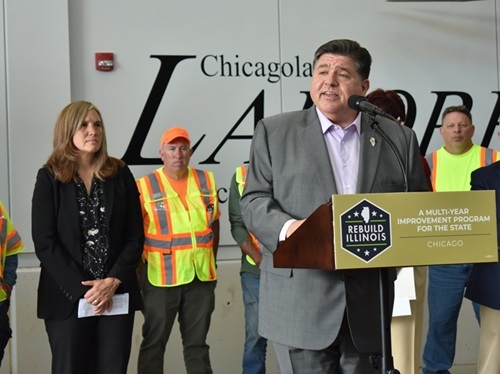Several state departments of transportation are expanding on their ongoing efforts to increase investments in rural mobility efforts.
[Above photo by TxDOT]
According to the Texas Transportation Commission, the Texas Department of Transportation has dedicated billions to statewide connectivity projects to upgrade interstates and other major rural highways over the next 10 years.

“TxDOT is planning to invest an historic level of approximately $14 billion in our rural areas over the next 10 years through our 2023 Unified Transportation Program,” noted Commissioner Alvin New. “This represents a 600 percent increase in planned rural funding compared to just seven years ago. It demonstrates TxDOT’s commitment to building and maintaining a safe and efficient transportation system, not only in our most populous areas, but also in those rural areas that are so vital to our state’s economic success.”
A new report by national research nonprofit TRIP dubbed “Keeping Rural Texas Connected” highlights the need for that level of rural investment. The Texas economy – driven by energy production and extraction, manufacturing, agriculture, forestry and tourism – relies on its transportation network to maintain strong economic growth and quality of life, TRIP said.

That will help Texas continue attracting new residents and businesses, as from 2000 to 2020, the state’s population increased by 41 percent and should increase another 60 percent by 2050.
“Texas’ growth, if not accommodated with an improved and expanded transportation network of modern highways, could lead to decreased connectivity within rural areas and between rural and urban communities, impeding further economic growth,” TRIP noted in a statement.
Meanwhile, Kansas is pushing forward with the deployment of the $14.6 million Great Plains Rural Freight Technology Corridor project in the western part of the state. That project will install 100 miles of fiber-optic cable and advanced technologies on a 100-mile stretch of U.S. 83, establishing a communication system will deliver real-time traffic, weather, and other operational information to commercial trucking to optimize freight routing.
“My administration is expanding innovative technology across rural areas of our state to improve safety, shore up our supply chain, and drive down the costs of transporting goods,” noted Governor Laura Kelly (D) in a statement said. “I commend the public and private collaboration responsible for securing the funding for a project that will improve delivery of agriculture products and other freight along an essential Kansas corridor.”

U.S. 83 is a major freight route, particularly for agriculture products, with about 5,000 commercial trucks using it daily, noted Julie Lorenz, secretary of the Kansas Department of Transportation.
Building broadband along that route will allow internet service providers to install cable to meet current and future demand while reducing installation costs.
“Getting broadband to rural areas more cost effectively by leveraging the state’s right of way is smart,” she said. “This will expand access to broadband and open more opportunities for Kansans to utilize technology in their homes and businesses.”
Concurrently, as part of an update to its 10-year transportation plan, the Colorado Department of Transportation is proposing to invest nearly $1 billion in rural roads as part of a long-term effort to “remake” the road network connecting smaller communities across the state.
The agency noted that the first four years of its current 10-year plan allocated approximately $382 million to rural pavement condition, subsequently improving rural roads in 55 counties. Colorado DOT seeks to maintain that rural road improvement focus throughout the upcoming decade by investing over $940 million over the life of its updated 10-year plan.
 States
States
Illinois Unveils Historic $50B Infrastructure Program
October 10, 2025 States
States

